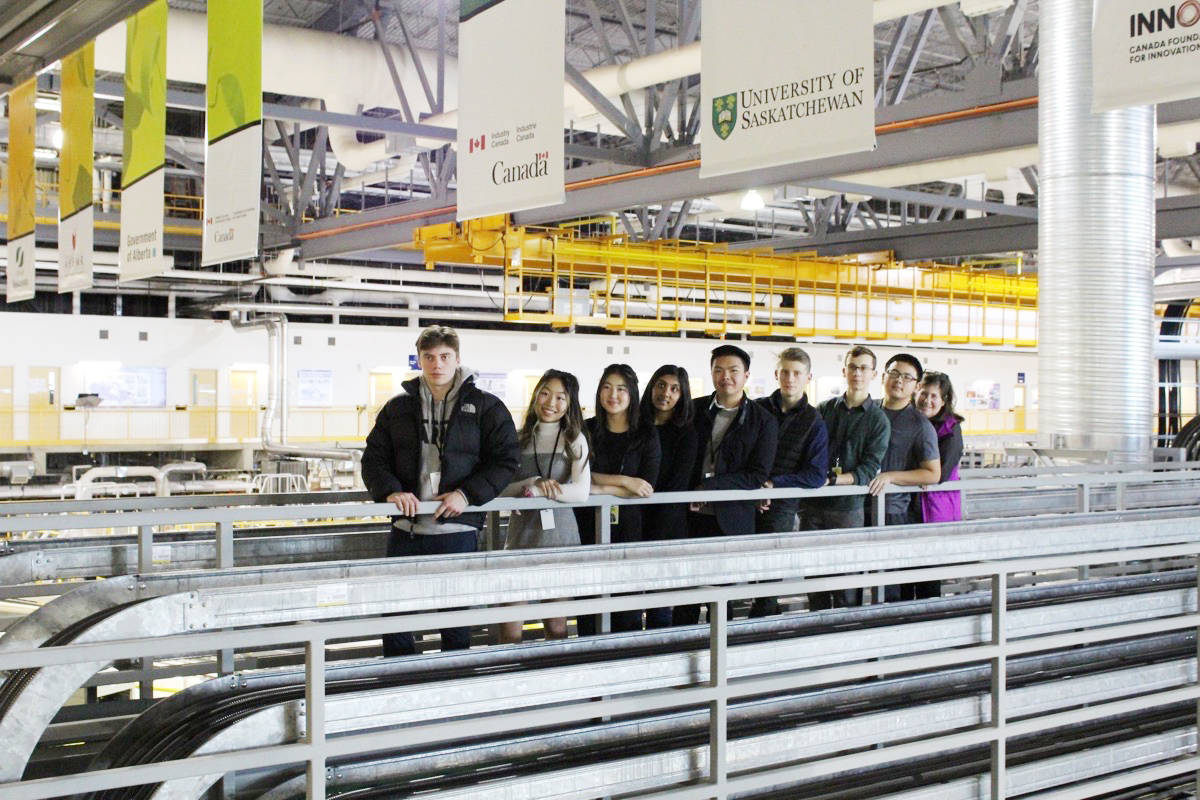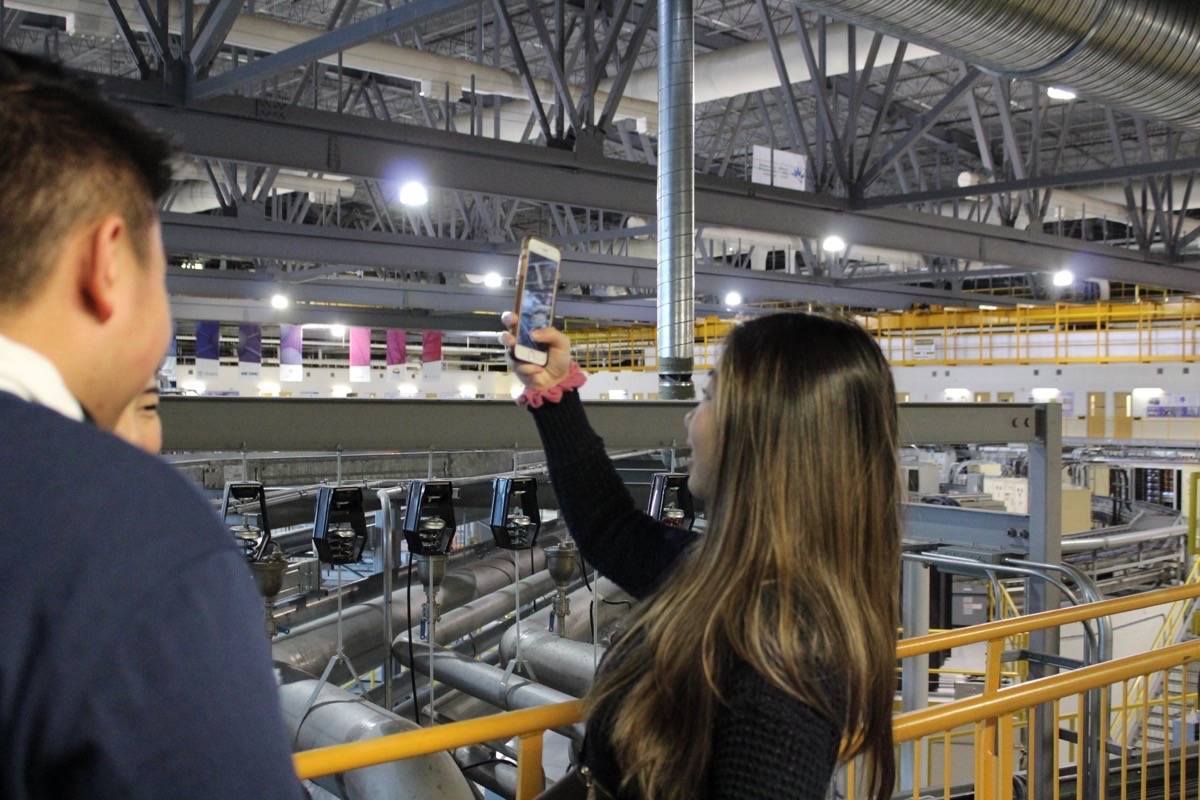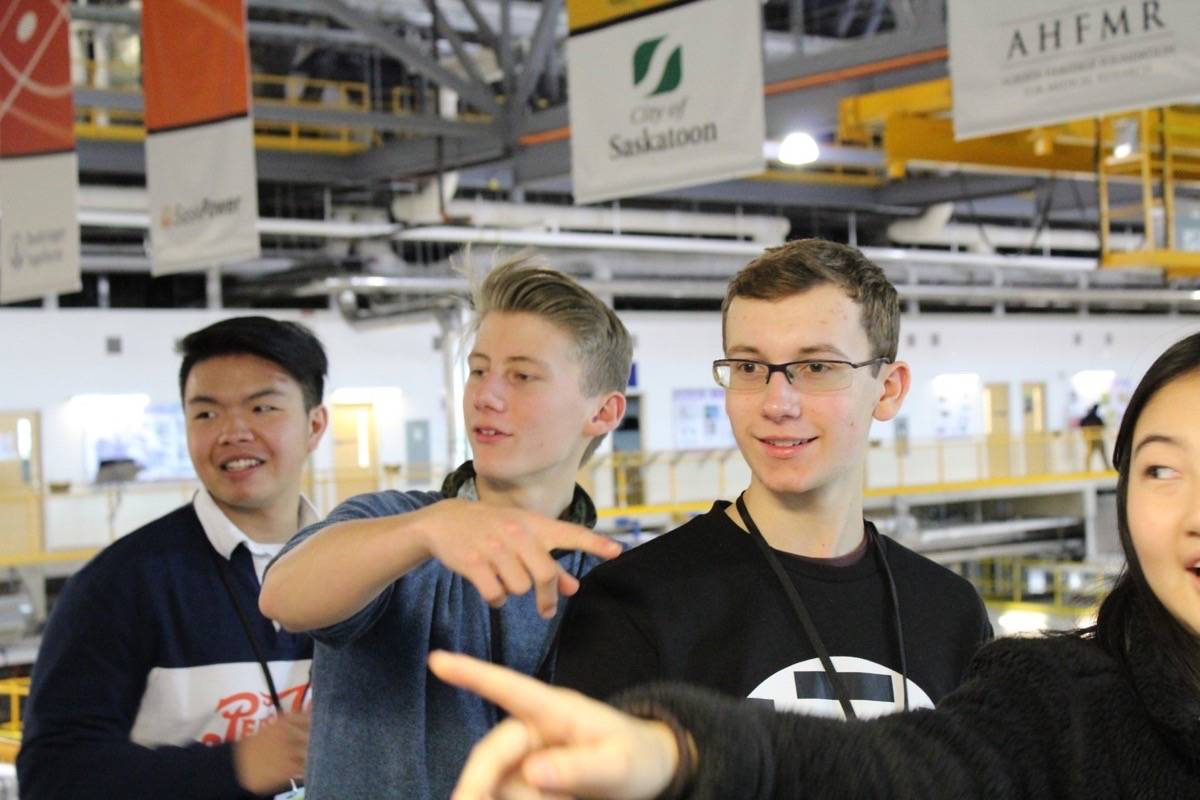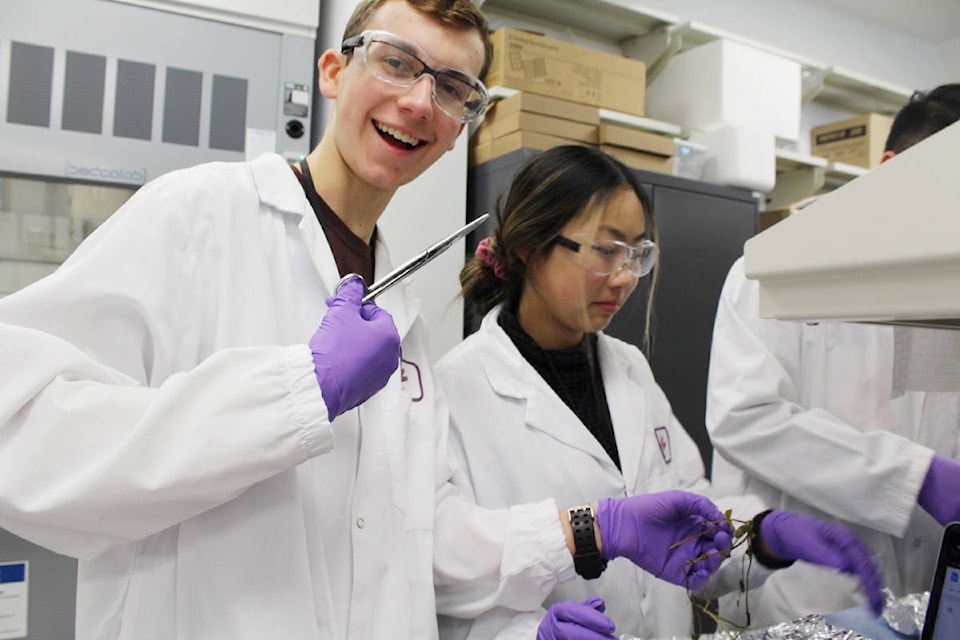Eight students at Meadowridge school had a once-in-a-lifetime opportunity to conduct an experiment at Canada’s national synchrotron light source facility at the University of Saskatchewan.
The students were working on a six month long personal project – mandatory for all Grade 10 students at the school – about the impact of commercial glyphosate-based herbicides have on the mineral and nutrient content of soil.
Specifically they investigated the impact on peas.
They – Grade 10 students Isha Dau, Meverest Lin, and Ray Luo; and Grade 11 students Jack Davison, Noah Wong, Kayla Margawang and Pawel Pater – started the project last May, led by Grade 10 student Sam Davison.
Davison came up with the idea because he lives beside a cranberry bog and initially thought of investigating the effects of phosphorus downstream when water is drained from the flooded fields.
READ MORE: Meadowridge students unleash their robotic talents
From there they read about law suits regarding the carcinogenicity of commercial glyphosane-based herbicides, a product that is used in gardens to kill unwanted vegetation.
The team decided to use peas to conduct their research because they are fast growing and they didn’t have much time to grow their samples.
They used a greenhouse at the school where they planted between 75 to 100 pea plants. They applied the commercial glyphosate-based product for two weeks before harvesting the peas, drying them out and taking them with them to Canadian Light Source in Saskatchewan
More than 1,000 academic, government and industry scientists from around the world visit Canadian Light Source every year, according to the facility’s web page, where they develop innovative solutions in health, agriculture, environment and advanced material.
The Meadowridge students took part in the Students on the Beamlines program, where high school students are able to conduct their own research experiments.
READ MORE: Maple Ridge private school names new headmaster
To be accepted into the program science teacher Cindy Hops had to attend a teacher’s workshop in Saskatoon before the team was created and developing their research project. They were partnered with the program’s education program lead Tracy Walker, who, Hops said, guided her group through the whole experience.
Students had to be at least 14-years-old to be accepted and a maximum of 15 in a group.
Their experiment had to span several months and an educational proposal that focused on the expected education outcomes of the experiment.
Then the students had to spend a minimum of four days at the facility to use the synchrotron – a source of brilliant light that scientists use to gather information about the structural and chemical properties of various materials at the molecular level – and communicate their results through an oral presentation, poster and article.
A grant from the Natural Sciences and Engineering Research Council went towards their trip.
“By accelerating electrons really quickly you are able to produce X-rays like in medical imaging,” 15-year-old Sam Davison explained about the synchrotron.
“Except it is really high energy, and can get really specific.”
“By using that we were able to discern exactly what is in something,” he said.
What they found was that copper was chelating out of the soil, meaning a chemical bond was being formed, enveloping the copper in the soil, and leaving the soil in the water runoff. The soil was being left copper deficient, and, the students noted that their plants were dying.
The experiment has prompted further questions that the students are hoping are probed further, possibly by other scientists, like what impact this is having on the aquatic system and if the copper remain harmless once it is bonded.
After reflecting on the whole experience Jack Davison said it has really rounded out his ability to communicate when it pertains to science.
“Science takes place all around us and to have had the ability to participate in professional science outside the school classroom has allowed me to communicate in a whole new light and make informed decisions based off what I learnt,” he said.
Noah Wong enjoyed being treated like a “real scientist”.
“I think having the opportunity to experience such an advance scientific facility firsthand made me realize how complex science is and how many different factors there are that can influence an investigations result,” noted Wong.
And Pawel Pater was amazed by the sheer size of the facility.
“It was also fascinating going to the ground floor of the facility, seeing all the electronic components which made the whole system work in coordination, and seeing how many researchers were using the facility for such a diverse range of experiments,” said Pater.
Hops said her students got to experience first-hand how much interpretation of data depends on the vision of the experiment and the meticulousness which which they gather and document their data.
“We learned that the results are only as good as the questions we ask.”
cflanagan@mapleridgenews.com
Like us on Facebook and follow us on Twitter



